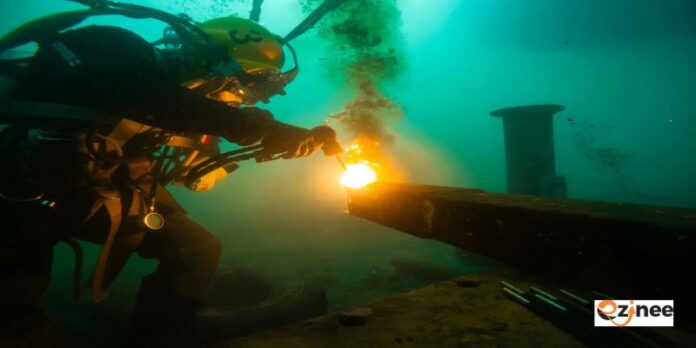Maintaining and building maritime and offshore infrastructure depends much on underwater welding. Bridge repairs, pipeline installations, ship maintenance, offshore oil rig building all makes use of it extensively. The underwater welding services cost is determined by manpower, tools, ambient conditions, and project complexity among other things.
Another important issue is efficiency as underwater welding has to be finished quickly to minimize disturbance and guarantee long-term structural integrity. Underwater welding is feasible for major infrastructure projects depending on cost-effectiveness and operational efficiency. Knowing these elements enables companies and governments to make wise judgments on underwater welding project investments.
Labor Costs and Needs for Skilled Workforce
The requirement of highly qualified and trained divers is one of the main expenses in underwater welding. These experts pay hefty fees as they go through intensive training to develop certain talents. Underwater welding’s intricacy calls for diving knowledge and welding ability, which increases labor expenses.
Furthermore, welders get better pay and complete insurance coverage since their work is dangerous. Industry demands will affect the demand for competent underwater welders, therefore impacting labor prices. Companies have to strike a compromise between labor quality and project budget limits to maximize costs while also guaranteeing safety and efficiency.
Technological and Equipment Costs
The kind of equipment and technology applied in the operation determines also the cost of underwater welding. Each of wet and dry welding—also known as hyperbaric welding—requires various setups with related expenses. Usually more affordable, wet welding has restrictions on weld quality and durability.
Though more costly, dry welding—done under hyperbaric chambers in controlled environments—results in stronger welds. Further raising total project expenses are investments in monitoring systems, protective clothing, and premium welding machines. Businesses have to evaluate their equipment decisions closely in order to properly mix efficiency with cost.
Safety and Environmental Conventions
Significant environmental and safety issues raised by underwater welding affect cost and efficiency as well as safety. Strong currents, poor visibility, and high water pressure—harsh underwater conditions—call for extra safety precautions and specific methods. Following safety standards and environmental laws might cost infrastructure projects more.
While risk assessments, enough training, and emergency response planning assist to reduce mishaps, they raise running expenses. Another issue for sustainable projects is the application of ecologically friendly welding methods including low emissions and materials resistant to explosions. Notwithstanding these difficulties, effective project completion depends on guarantees of worker safety and environmental preservation.
Project Timeline and Operational Effectiveness
The whole cost of an underwater welding job is strongly related to the time needed to finish it. Because of longer work hours, equipment rents, and material prices, delays in welding processes might cause higher charges. Effective planning, precise project evaluations, and well-trained staff assist to guarantee timely completion and aid to decrease outage.
Unexpected undersea hazards and bad weather might cause disruptions to plans that result in financial losses. Using cutting-edge project management techniques—real-time monitoring and predictive maintenance—improves effectiveness. Simplifying processes and reducing rework help to save costs and increase operational efficiency.
Extended Care and Financial Consequences
Underwater welding projects in infrastructure call for constant maintenance to guarantee lifetime and safety. Badly done welds can cause structural damage that calls for expensive repairs and replacements. Routine maintenance tasks, corrosion prevention strategies, and frequent inspections assist to lower these hazards.
Remote monitoring and robotic welding technologies among other predictive maintenance techniques increase efficiency and help to reduce unanticipated expenses. A well-planned maintenance strategy guarantees that during its operating lifetime infrastructure stays cost-effective and functioning.
Underwater welding’s cost and efficiency in infrastructure projects rely on several linked elements in each direction. Overall project expenditures include skilled workers, modern tools, safety precautions, and environmental issues. Good project planning and management techniques enable to maximize efficiency and reduce unwarranted expenses.
The materials and welding methods used affect both long-term structural integrity and immediate expenses. Purchasing premium underwater welding services improves infrastructure longevity and helps to save maintenance expenses. Decision-makers looking for dependable underwater welding services have to give operational efficiency top priority along with cost-effectiveness for good project results.



